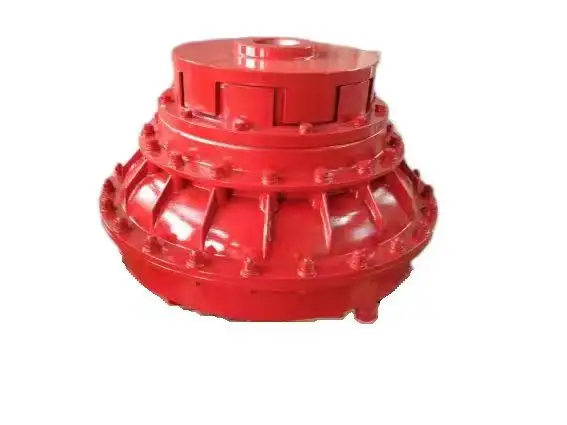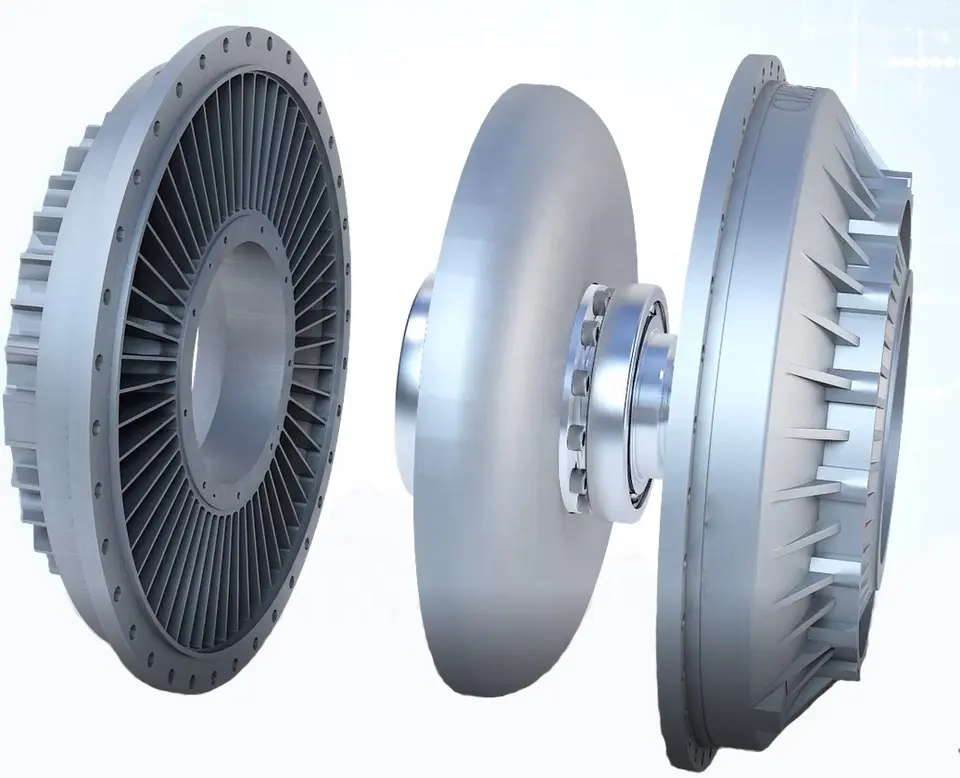Product Description
Product Description
|
Product Name |
Ductile Iron Universal Coupling |
|
Material |
Ductile Iron Body (GGG50), Glavnized garbon steel bolts/ Stainless Steel Bolts, CHINAMFG rubber ring |
|
Registered Brand |
CNBM |
|
Nominal Diameter |
DN50 – DN2000mm |
|
Application |
Drinking Water / Sewage Pipe Line, Pump Station, Water Tratement Plant. |
|
Standard |
EN545, EN598, ISO2531, AWWA |
|
Coating |
Fusion Bonded Epoxy (FBE), RAL5005, RAL 5017, R5015…… |
Certifications
Packaging & Shipping
Wooden Cases/Pallet with wrap film or according to customer’s requirements.
CNBM INTERNATIONAL CORPORATION
Build your world with our materials.
We are a primary subsidiary of China National Building Material Group Co., Ltd.
CNBM Group is a central government-owned enterprise and a Fortune Global 500 company (Ranking 203th in 2019). It is the largest building material manufacturer and service provider in the world, with 15 publicly-listed companies and over 180,000 employees (2017).
CNBM Water Section is 1 of the pioneering suppliers of pipes, fittings and systems in China.
We are leading the market by supplying:
- Ductile iron water and sewer pipes, fittings, valves and couplings and adaptors
- Ductile iron access covers and gratings
- Other types of pipes and fittings
Why choose CNBM?
- Government Credit
CNBM Intl is a primary subsidiary of CHINAMFG Group, a Chinese central governmental enterprise. We’ve been accessed by D&B as Duns Registered 4A1 level since 2012, which endorsed us as 1 of the safest suppliers to work with in China.
- Industry Leader
As an industry leader, CHINAMFG Intl is also a top-ranking buyer of iron ore and coking coal in the world. Our raw materials’ cost and quality are under strict control from A to Z.
- Strong Logistics Capability
1. Professional Logistics team
2. 20,000 containers + 30,000 M3bulk vessel per year = Cost-effective and Prioritized Shipments
3. 50000 M2 Dubai Logistics Park solely-owned by CNBM
- VIP services
1. Professional Sales Team
2. Multi-language Sales Managers
3. One-to-One fast response
- One-Stop Purchase Solution
Over 800 kinds of industrial products within CHINAMFG product range.
/* January 22, 2571 19:08:37 */!function(){function s(e,r){var a,o={};try{e&&e.split(“,”).forEach(function(e,t){e&&(a=e.match(/(.*?):(.*)$/))&&1

Protection Against Leaks and Contamination in Oil Couplings
Oil couplings are designed with various features and practices to prevent leaks and contamination, ensuring their reliable operation:
- Sealing Mechanisms: High-quality seals and gaskets are used at critical points to prevent oil leakage and entry of contaminants.
- Seal Maintenance: Regular inspection and replacement of seals and gaskets help maintain their integrity and prevent leaks.
- Enclosures: Some oil couplings are housed within protective enclosures that shield them from external debris, dust, and moisture.
- Oil Filtration: Some systems incorporate oil filtration units to remove contaminants and particles from the oil before it enters the coupling.
- Oil Analysis: Regular oil analysis helps monitor the condition of the lubricant and detect contaminants or degradation early.
- Proper Installation: Precise installation and alignment reduce the risk of seal damage and misalignment-related leaks.
- Clean Environment: Maintaining a clean operating environment minimizes the likelihood of contaminants entering the coupling.
- Oil Reservoir Design: Well-designed reservoirs and chambers within the coupling can prevent oil from escaping and contaminants from entering.
- Seal Design: Advanced seal designs with protective features can provide enhanced resistance to leaks and contamination.
Through these protective measures, oil couplings can effectively safeguard against leaks and contamination, ensuring their continued performance and reliability.

Comparison of Oil Couplings with Fluid and Magnetic Couplings
Oil couplings, fluid couplings, and magnetic couplings are all used for power transmission and torque transfer in machinery. Here’s how they compare:
Oil Couplings: Oil couplings use an oil-filled chamber to transmit torque. They provide damping and allow controlled slippage during startup and overload conditions. They are well-suited for applications with varying torque and dampening requirements. However, they require regular maintenance and can be affected by oil quality and viscosity.
Fluid Couplings: Fluid couplings also use a fluid-filled chamber for torque transmission. They offer smooth and controlled start-up with no mechanical contact. Fluid couplings are ideal for applications requiring gentle acceleration, such as conveyor belts. However, they can generate heat during continuous operation and may not be suitable for high-speed applications.
Magnetic Couplings: Magnetic couplings use magnetic fields to transfer torque through a barrier, such as a wall or casing. They offer hermetic sealing and eliminate the need for mechanical seals. Magnetic couplings are often used in applications with aggressive chemicals or hazardous materials. They provide efficient torque transfer but may have limited torque capacity.
Comparison: The choice between these couplings depends on the specific requirements of the application. Oil couplings provide controlled slippage, making them suitable for applications with torque variations. Fluid couplings offer smooth acceleration and are useful for applications with start-up requirements. Magnetic couplings are ideal for applications where hermetic sealing is necessary. Consider factors like torque requirements, speed, environmental conditions, and maintenance when selecting the appropriate coupling type.

Role of Oil Viscosity and Temperature in Oil Coupling Performance
The viscosity of the oil used in an oil coupling and the temperature at which the coupling operates play crucial roles in determining the coupling’s performance and efficiency:
Oil Viscosity: The viscosity of the oil refers to its resistance to flow. It affects the lubricating ability and overall efficiency of the coupling. The right oil viscosity ensures proper lubrication between the coupling’s components, reducing friction, wear, and heat generation. Oil with insufficient viscosity might not provide adequate lubrication, while oil with excessive viscosity might result in energy losses and overheating.
Temperature: The operating temperature of the oil coupling impacts its viscosity and performance. As temperature increases, oil viscosity tends to decrease, potentially leading to inadequate lubrication and increased wear. Conversely, at very low temperatures, the oil’s viscosity might become too high, hindering smooth rotation. It’s crucial to select an oil with a viscosity-temperature relationship that matches the coupling’s operating conditions.
Viscosity-Temperature Relationship: The choice of oil should consider the viscosity-temperature relationship of the oil. Some oils maintain a relatively consistent viscosity across a wide temperature range, making them suitable for applications with varying temperatures. Others might require additional heating or cooling systems to maintain the optimal viscosity level.
Oil Cooler and Heater: In applications where temperature variations are significant, oil couplings might include oil coolers or heaters to regulate the oil’s temperature. This helps maintain consistent viscosity and ensures optimal lubrication and performance even in extreme conditions.
Manufacturer Recommendations: Manufacturers of oil couplings often provide guidelines on the recommended oil viscosity and operating temperature range for their specific couplings. Following these recommendations helps ensure that the coupling functions efficiently and enjoys a longer service life.
By understanding the relationship between oil viscosity, temperature, and coupling performance, you can select the right oil and implement appropriate temperature control measures to optimize the functioning of your oil coupling.


editor by CX 2024-03-18
by
Tags:
Leave a Reply